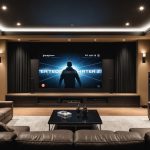Key Design Principles for User-Friendly Inventory Systems
Crafting user-friendly inventory systems revolves around foundational inventory design principles that enhance user experience. An intuitive layout and navigation streamline processes, granting users effortless access to the features they need. Imagine an RPG inventory where every action feels logical and seamless; such experiences elevate player engagement immensely.
Balancing complexity and simplicity is critical. Players demand systems engaging enough to support intricate gameplay mechanics while remaining straightforward. Overly complex designs deter interaction, yet oversimplified systems risk diminishing depth. An effective design plays the middle ground, attending to both veteran and casual users.
Also to discover : Unlocking the Secrets of Lush Jungle Flora: Essential Tactics for Designing Captivating Immersive Exploration Games
Incorporating player feedback empowers designers to tailor systems accurately. Users offer valuable insight into real-world usage habits, allowing for informed adjustments. Feedback loops lead to continuous improvement, ensuring the system remains responsive to evolving user needs. Listening and responding to players not only betters design but also fosters community trust and satisfaction.
Ultimately, inventory systems in RPGs thrive when intelligently designed, prioritizing user experience through clarity, thoughtful balance, and an inclusive feedback process. These principles create an environment where players can focus on enjoyment without the hindrance of a cumbersome interface.
Also to read : Transforming Historical Reenactment Games: Engaging AI-Driven Character Interactions for Authentic Experiences
User Interface Considerations
An effective UI design in inventory systems is vital for enhancing user interaction. Choosing the right color schemes and fonts significantly impacts readability, creating a visually appealing yet functional environment. A well-thought selection should maintain consistency across the interface, ensuring that information is accessible at a glance.
Designing responsive interfaces is another crucial factor, as RPGs are played on diverse devices. A responsive design adapts to different screen sizes, maintaining usability and aesthetics whether a player is on a PC or mobile device. Ensuring that the interface scales appropriately without losing functionality contributes to an inclusive user experience.
Icons and visual cues play a pivotal role in interaction design. Their careful incorporation aids usability, helping players navigate and manage inventory with ease. For example, intuitive icons can quickly communicate item categories or actions, minimizing the need for excessive text and enabling a smoother user journey.
Taking these elements into account ensures that inventory systems not only look good but function seamlessly, providing players with an engaging and accessible experience. Utilizing thoughtful UI design fosters a more immersive gameplay, helping maintain player engagement across various platforms.
Organizational Methods for Inventory Management
Crafting efficient inventory management is crucial in enhancing user experience. Effective item categorization techniques are foundational; items must be classified accurately to facilitate quick access. For example, grouping by item type—such as weapons, potions, and materials—helps players locate their needed items without hassle.
Implementing sorting and filtering options is equally important in RPGs. Consider giving players the ability to sort items by attributes like type, rarity, or value. This flexibility enables users to personalize their inventory layout, contributing to a more tailored experience. Filters further refine search processes, allowing players to zero in on specific items swiftly.
A robust search functionality within inventories can elevate the user experience significantly. This feature becomes especially vital in games with extensive item libraries, where manual browsing becomes inefficient. A precise search tool ensures players focus on gameplay rather than inventory tedium.
By incorporating these methods, RPG inventory systems can transform from mere item lists to powerful organizational tools. These inventory design principles enhance gameplay integration, making item management seamless and intuitive. When players enjoy smooth inventory experiences, they can focus more on advancing through the immersive RPG world.
Integration of Item Management in Gameplay
Integrating item management into gameplay is crucial for creating an immersive RPG experience. Effective item interaction allows players to seamlessly use and manage their inventory without interrupting the flow of the game. For instance, quick access menus or hotkeys can facilitate gameplay integration by enabling players to utilise items during critical moments, enhancing strategic depth and engagement.
Consider successful RPG mechanics like those in “The Witcher 3” or “Dark Souls,” where item management feels effortless yet impactful. These games masterfully weave inventory systems into gameplay narratives, allowing items to act as extensions of character abilities rather than mere collectibles. By doing so, they set benchmarks for future RPGs, demonstrating how well-designed systems can bolster immersion.
Designing item management that naturally aligns with core game mechanics requires a keen understanding of player behaviours and expectations. Developers should aim for systems that are intuitive, minimizing the need for constant shuffling or cumbersome navigation. Aligning inventory processes with player growth paths ensures that item management remains relevant, offering seamless interaction that enriches the RPG journey.
In conclusion, integrating item management organically within gameplay is imperative, fostering a holistic experience where every action counts. Properly executed, it elevates the narrative and strategic elements of the game.
Potential Pitfalls in Inventory System Design
Navigating inventory design principles in RPG inventory systems involves sidestepping common pitfalls that can mar the user experience. One prevalent issue is cramming too much information into a limited space, leading to cluttered inventory layouts. Such designs overwhelm players, obscuring item visibility and reducing usability.
Poor item categorization can compound this issue, resulting in tangled item lists where players struggle to locate necessary equipment or resources. Precise categorization is essential for maintaining order and facilitating fast item retrieval. Missteps here can engender player annoyance and disrupt engrossing gameplay.
Engaging in comprehensive user testing is crucial to uncovering usability issues before release. Trials should solicit genuine player feedback to identify pain points like unintuitive controls or layout errors. This process can reveal overlooked design flaws, allowing developers to rectify issues that could lead to dissatisfaction.
Moreover, neglecting player feedback during development frequently results in systems that don’t resonate with target audiences. Integrating community insights helps tailor features, reducing frustration and ensuring systems align with player expectations. Proactive engagement with users ultimately aids in crafting intuitive, accessible designs, empowering players to engage deeply with inventory mechanics.
Case Studies of Successful RPG Inventory Systems
Exploration of case studies offers insights into best practices and lessons learned from inventory design triumphs and pitfalls.
Study of a Classic RPG
Examining classic RPGs provides valuable lessons on inventory design principles. For example, “Final Fantasy” has long been hailed for its elegance and simplicity. Its item categorization enables seamless exploration, setting a high bar for user experience by organising inventory intuitively.
Innovations in Modern RPGs
Modern RPGs like “The Witcher 3” spotlight innovative inventory management. This game implements dynamic sorting options and contextual retrieval systems, fostering an immersive user experience. The integration of visual cues significantly enhances interaction design by presenting layered information efficiently.
Lessons Learned from Failed Systems
Failed systems, such as in “Mass Effect: Andromeda,” underline the pitfalls of neglecting user-centric design. Extensive feedback highlighted bloated interfaces, leading to player frustration and decreased engagement. Such design flaws stress the necessity for user testing and responsive iteration based on community insights.
These studies emphasise adopting a balanced approach, blending past wisdom with modern innovations, to craft inviting and functional RPG inventory designs. Integrating feedback loops ensures adaptability, translating into increased player satisfaction and game success.
Visual Aids and Diagrams for Inventory Design
Incorporating visual aids and diagrams is vital in crafting user-friendly inventory design principles for RPGs. They simplify complex systems and enhance user experience by providing clear illustrations of item management mechanics. Visuals act as anchors, helping players navigate through intricate RPG inventories, understanding them at a glance.
Effective diagrams can bridge the gap between conceptual design and user interaction. For instance, flowcharts or item trees can depict relationships between various components, guiding users smoothly through the inventory process. Such visual representations are particularly useful in demonstrating sorting options or hierarchy within inventory organization.
Looking at existing examples, games like “Skyrim” have employed intuitive graphics to relay inventory details—a practice that transforms overwhelming inventories into manageable sections. These visuals directly contribute to enhanced player comprehension, allowing for easier navigation and improved interaction with inventory systems.
Crafting your own design illustrations requires consideration of user needs and aims to distil core elements into digestible visuals. Engaging players with straightforward diagrams can reinforce their understanding of inventory functionality, boosting overall satisfaction. Employing strategic visuals ensures RPGs maintain an accessible interface, enriching the player’s journey as they delve into vast, immersive worlds.











